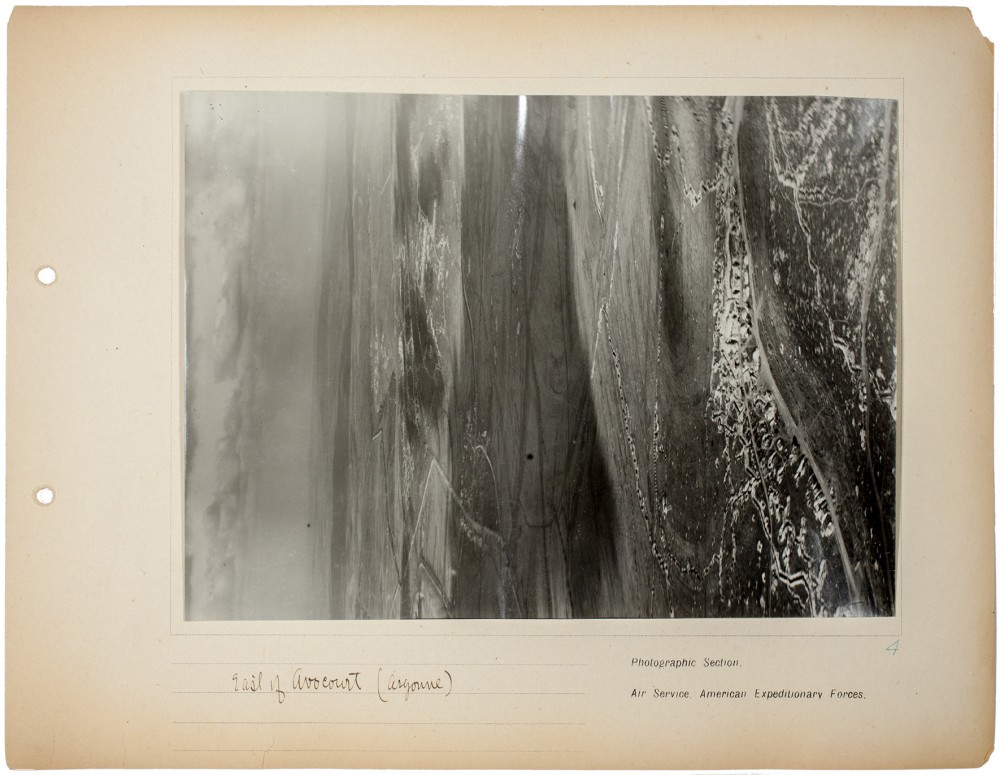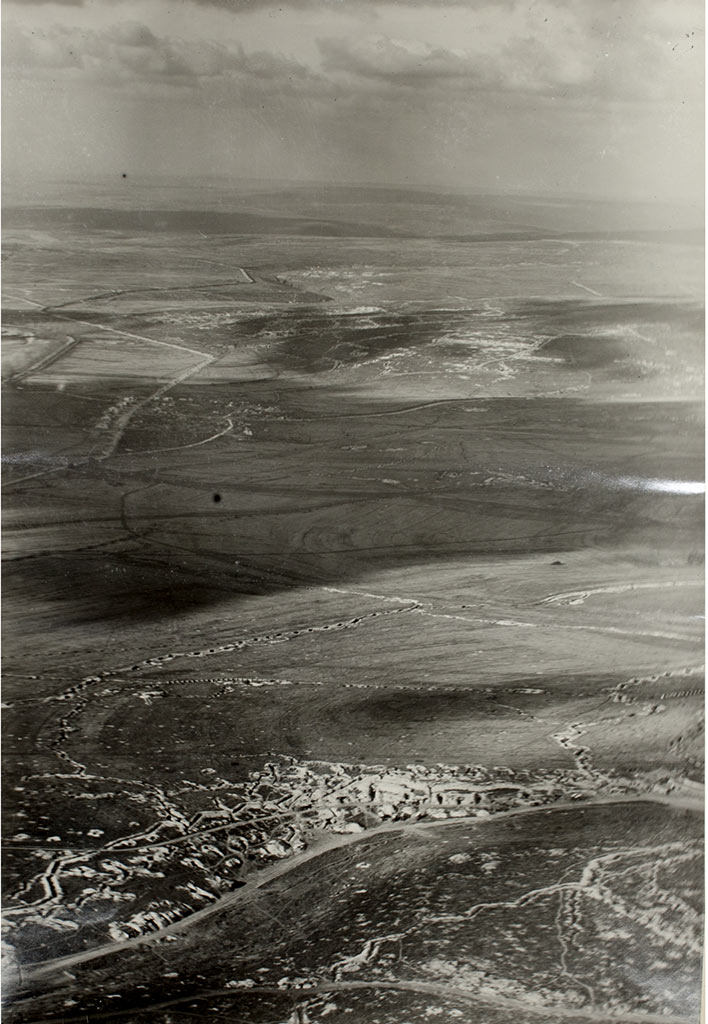Gelatin silver print
Gift of William Kistler, 1977.680
The Meuse-Argonne Offensive was part of the final Allied offensive of the war, and its momentum would drive German forces on the Western Front to retreat farther than they had for years. This would be instrumental to the signing of the armistice of November 11, 1918.
Military records indicate that the Photographic Section encountered significant obstacles while setting up its program overseas. By the time of the Meuse-Argonne Offensive, the Photographic Section was fully operational—Steichen reported that more than 50,000 prints were made and distributed over the course of five days in preparation for the battle, contributing in large measure to the Allied victory.
The value of aerial photography was not been immediately recognized, and procuring the necessary tools had proved especially challenging. Until the last battles of the war, Steichen and his team had to deal with inadequately trained personnel, delayed supplies, and obsolete equipment. Steichen and his superior officer, Major James Barnes, made several trips to the headquarters of their French and British counterparts for training and relied heavily on their resources.
Inscribed recto, on album page, lower left, in black/brown ink: “East of Avocourt (Argonne)”; printed recto, on album page, lower right, in black ink: “Photographic Section. / Air Service. American Expeditionary Forces.”; inscribed recto, on album page, lower right, in blue ink “4”; unmarked verso


